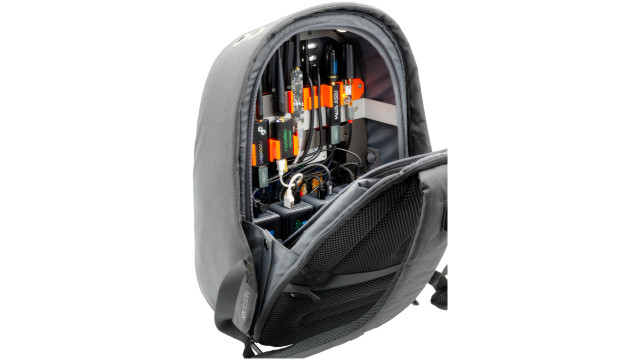Felt fusion
Enter DARVA, a cute little animated robot who just loves to chat, and who runs off a Raspberry Pi 4. Dane says, “DARVA was made by first cutting and sewing all the separate parts of the robot out of felt. Then we took a picture of all these robot parts and cut them out using photo editing software […]. To bring DARVA to life, we created a webpage (with HTML canvas and JavaScript) to which we added all these photographs and animated them.”

Over the period of a week or two, Dane and Nicole’s idea really took shape. The most difficult part of the project was the touchscreen orientation: “As the felt robot is standing upright, we thought it would be best to use the screen in portrait mode,” says Nicole. “Whilst you can easily change the screen rotation on Raspberry Pi, the touchscreen still worked in landscape mode; the mapping between where you touched the screen and where you clicked was wrong.” After a lot of trial and error, they decided to keep Raspberry Pi running in landscape and just rotated all the animations.
Digital deputy
They have also worked hard to ensure that DARVA has a lifelike quality, and introduced a degree of randomness to the robot’s actions. “The gauge rotates to a random position, for example, and the eyes randomly look left or right for a random amount of time,” says Nicole. DARVA also loops through a series of texts that Dane and Nicole have written to give some more information about their booth at events, while some animations are activated by clicking or touching parts of the screen, including DARVA’s head and belly.

So, how have people reacted to their new digital sidekick? Dane tells us there was some initial confusion at one event: “We placed the original felt version of DARVA next to the touchscreen, because we thought it would be interesting to show how we went from a felt robot to a digital one. However, a lot of people thought the felt robot and the touchscreen were somehow connected and could interact, which was confusing because moving or touching the felt didn’t do anything.” However, DARVA has received a lot of compliments: “Kids especially loved the look and feel of it.”
Dane and Nicole are considering developing the project further. “Maybe we can make it a video game, or an interactive story, or connect the felt robot to the digital robot as many people expected,” says Nicole. “We have so many ideas, we hardly know what we eventually will end up making, but one thing is for sure: it will involve a Raspberry Pi!”








